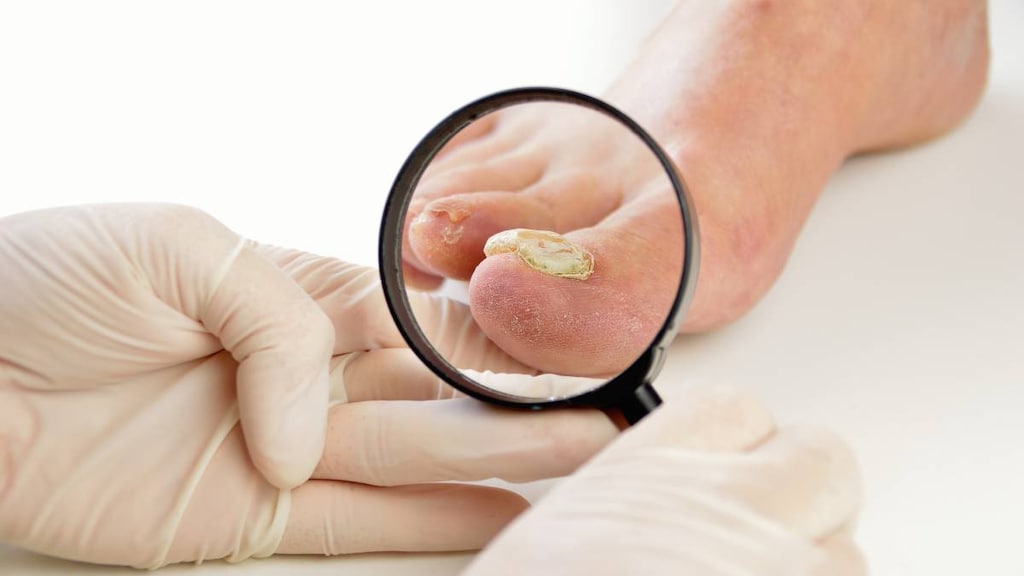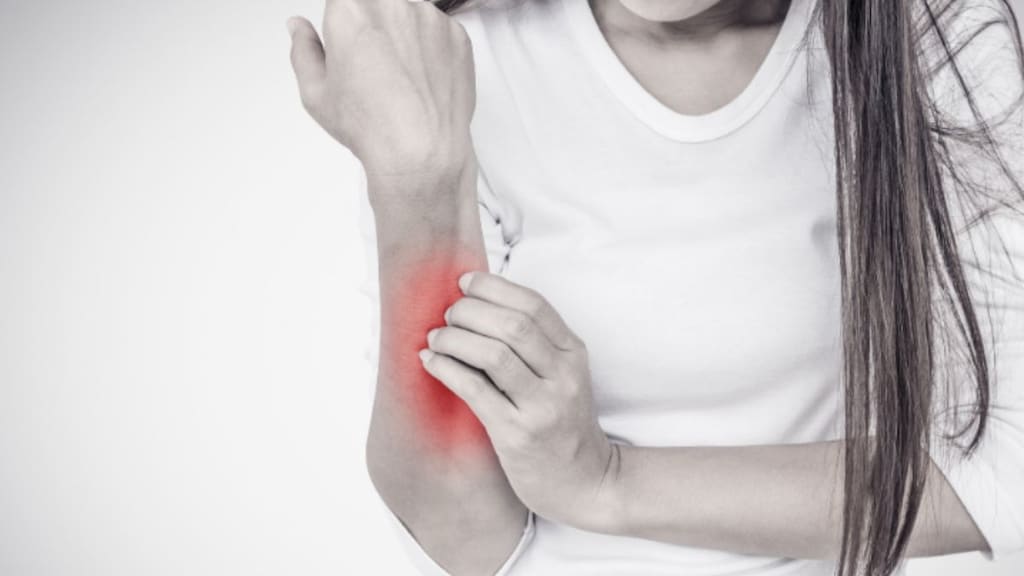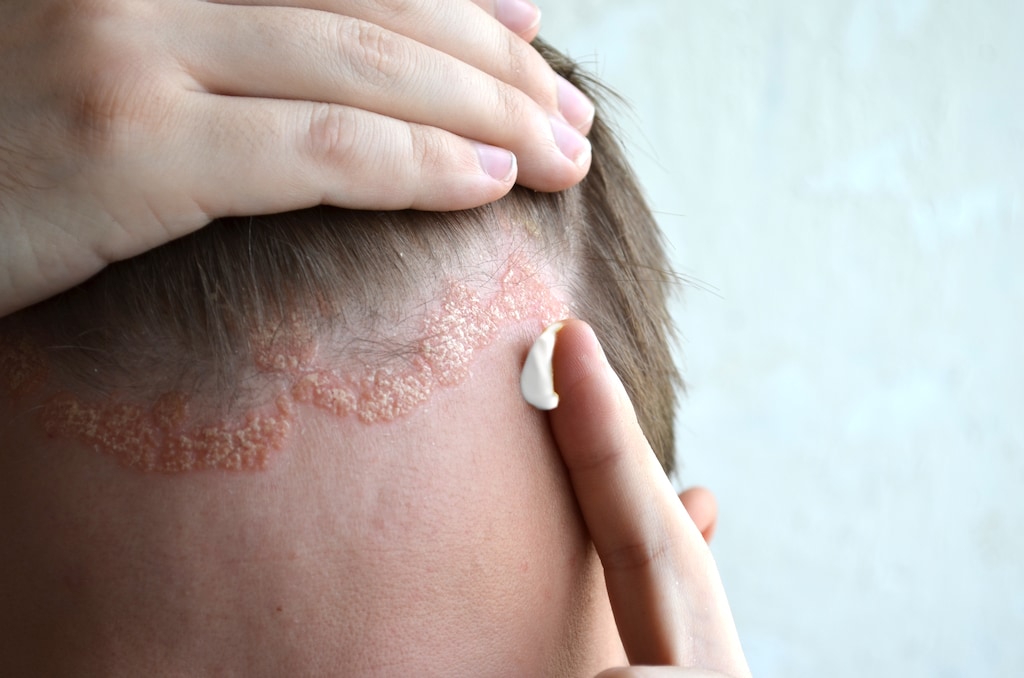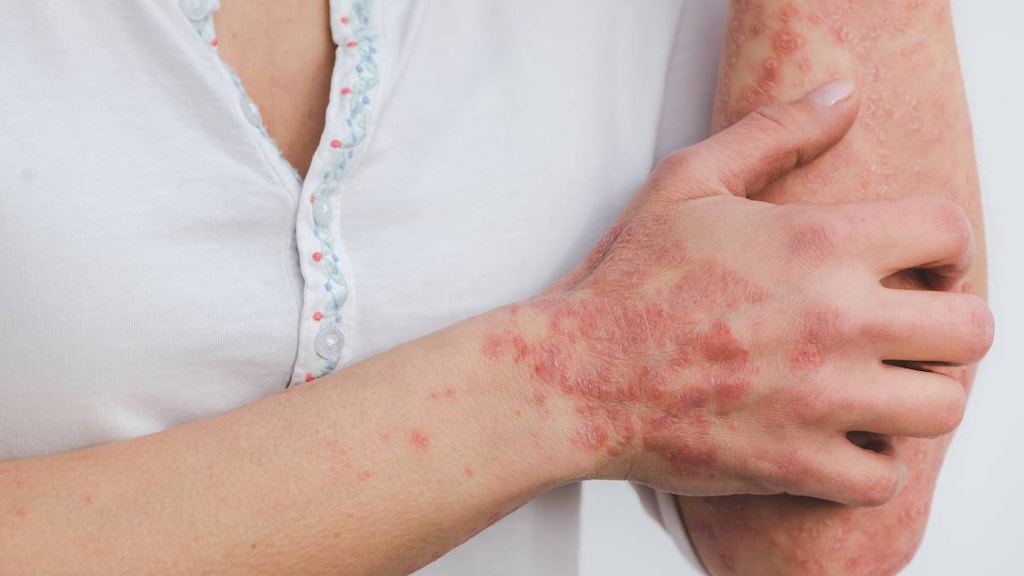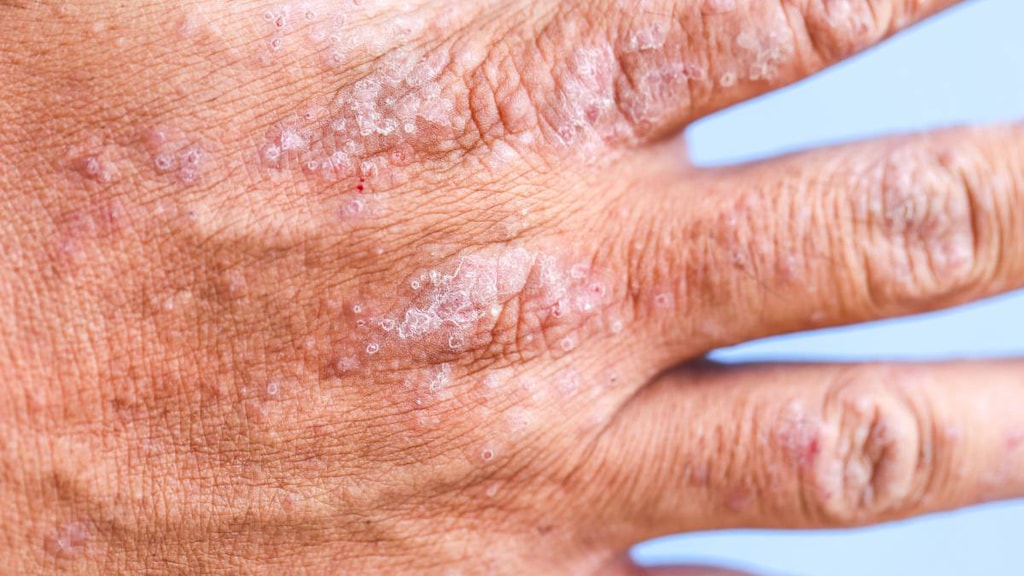Boxed Warning
Malignancy:
Although a causal relationship has not been established, rare cases of malignancy (ie, skin cancer and lymphoma) have been reported in patients treated with topical calcineurin inhibitors, including tacrolimus ointment. Avoid continuous long-term use of topical calcineurin inhibitors, including tacrolimus ointment, in any age group, and limit application to areas of involvement with atopic dermatitis.
Pediatrics:
Tacrolimus ointment is not indicated for use in children younger than 2 years of age. Only tacrolimus 0.03% ointment is indicated for use in children 2 to 15 years of age.
Dosage Forms
Excipient information presented when available (limited, particularly for generics); consult specific product labeling.
Ointment, External:
Protopic: 0.03% (30 g, 60 g, 100 g); 0.1% (30 g, 60 g, 100 g)
Generic: 0.03% (30 g, 60 g, 100 g); 0.1% (30 g, 60 g, 100 g)
Pharmacology
Mechanism of Action
Suppresses cellular immunity (inhibits T-lymphocyte activation), by binding to an intracellular protein, FKBP-12 and complexes with calcineurin dependent proteins to inhibit calcineurin phosphatase activity
Pharmacokinetics/Pharmacodynamics
Absorption
Minimally absorbed; serum concentrations range from undetectable to 20 ng/mL (~2 ng/mL in majority of adult patients studied)
Use: Labeled Indications
Moderate to severe atopic dermatitis: Treatment of moderate to severe atopic dermatitis in immunocompetent patients not responsive to conventional therapy or when conventional therapy is not appropriate
Use: Off Label
Atopic dermatitis (maintenance therapy)yes
Guidelines support use of topical calcineurin inhibitors, including tacrolimus, as maintenance to prevent flares and extend flare free intervals in patients with moderate to severe atopic dermatitis who responded to initial therapy Schneider 2012.
Oral lichen planusb
Data from controlled trials demonstrate that tacrolimus ointment is effective in improving clinical symptoms of oral lichen planus and may be considered an alternative therapy for patients who do not respond to topical steroids. Additional data may be necessary to further define the role of tacrolimus in this condition.
Psoriasiscyes
Data from controlled trials suggest that topical tacrolimus may be an effective treatment for psoriasis in areas of thinner skin, such as the face, or in the treatment of intertriginous psoriasis Lebwohl 2004, Liao 2007.
American Academy of Dermatology and National Psoriasis Foundation guidelines state that topical tacrolimus is a treatment option for intertriginous or facial psoriasis
Pyoderma gangrenosumc
Results of a noncontrolled study and several case reports/case series suggest that topical tacrolimus may be beneficial in the treatment of pyoderma gangrenosum Ghislain 2004, Lyon 2001.
Rosaceac
Topical tacrolimus for the management of rosacea has been studied in noncontrolled trials demonstrating variable results
Vitiligocyes
Data from a meta-analysis and randomized controlled trials suggest that tacrolimus may be effective in the management of vitiligo Lee 2019, Nordal 2011, Stinco 2009.
European Dermatology Forum consensus guidelines support the use of topical calcineurin inhibitors as first-line therapy for patients with vitiligo; use should be limited to the head and neck regions
Contraindications
Hypersensitivity to tacrolimus or any component of the formulation
Dosage and Administration
Dosing: Adult
Atopic dermatitis (moderate-to-severe): Topical:
Treatment: Apply thin layer of 0.03% or 0.1% ointment to affected area twice daily; rub in gently and completely. Discontinue use when symptoms have cleared. If no improvement within 6 weeks, patients should be re-examined to confirm diagnosis.
Maintenance therapy (off-label use): Apply one application (thin layer of 0.03% or 0.1% ointment) to areas usually affected twice daily twice a week (Schneider 2012).
Oral lichen planus (off-label use): Topical: Apply thin layer of 0.1% ointment to affected area up to 4 times daily; the treatment period in clinical trials ranged from 4 to 6 weeks (Corrocher 2008; Laeijendecker 2006; Radfar 2008).
Psoriasis (off-label use): Topical: Apply thin layer of 0.03% ointment twice daily; the treatment period in clinical trials was 6 weeks (Liao 2007).
Pyoderma gangrenosum (off-label use): Topical: Apply thin layer of 0.1% or 0.3% ointment to affected area once daily (Ghislain 2004; Lyon 2001); the treatment period in one clinical trial (0.3% ointment) was up to 10 weeks (Lyon 2001).
Vitiligo (off-label use): Topical: Apply thin layer of 0.1% ointment to affected area twice daily; may require several months for adequate response; the treatment period in clinical trials ranged from 10 weeks to 18 months (Majid 2010; Radakovic 2009; Taieb 2013).
Dosing: Geriatric
Refer to adult dosing.
Dosing: Pediatric
Moderate to severe atopic dermatitis: Note: Discontinue use when symptoms have cleared. If no improvement occurs within 6 weeks, patients should be reexamined to confirm diagnosis. Topical:
Ointment 0.03%: Children ≥2 years and Adolescents: Apply a thin layer to affected area twice daily; rub in gently and completely
Ointment 0.1%: Adolescents ≥16 years: Apply a thin layer of 0.1% ointment to affected area twice daily; rub in gently and completely
Administration
Wash hands before and after application. Use the smallest amount of ointment needed to control the signs and symptoms of atopic dermatitis. Do not use with occlusive dressings. Do not bathe, shower, or swim right after application. Limit sun exposure during the treatment period. Burning at the application site is most common in first few days; improves as atopic dermatitis improves. Limit application to involved areas. Continue as long as signs and symptoms persist; discontinue if resolution occurs; re-evaluate if symptoms persist >6 weeks.
Storage
Store at room temperature of 25°C (77°F); excursions permitted to 15°C to 30°C (59°F to 86°F).
Drug Interactions
Alcohol (Ethyl): Tacrolimus (Topical) may enhance the dermatologic adverse effect of Alcohol (Ethyl). Monitor therapy
Antifungal Agents (Azole Derivatives, Systemic): May decrease the metabolism of Tacrolimus (Topical). Applicable Isavuconazonium considerations are addressed in separate monographs. Exceptions: Isavuconazonium Sulfate. Monitor therapy
Calcium Channel Blockers (Nondihydropyridine): May decrease the metabolism of Tacrolimus (Topical). Exceptions: Bepridil. Monitor therapy
CycloSPORINE (Systemic): May enhance the nephrotoxic effect of Tacrolimus (Topical). Tacrolimus (Topical) may enhance the nephrotoxic effect of CycloSPORINE (Systemic). Tacrolimus (Topical) may increase the serum concentration of CycloSPORINE (Systemic). CycloSPORINE (Systemic) may increase the serum concentration of Tacrolimus (Topical). Avoid combination
Danazol: May increase the serum concentration of Tacrolimus (Topical). Monitor therapy
Grapefruit Juice: May decrease the metabolism of Tacrolimus (Topical). Monitor therapy
Immunosuppressants: Tacrolimus (Topical) may enhance the adverse/toxic effect of Immunosuppressants. Exceptions: Cytarabine (Liposomal). Avoid combination
Macrolide Antibiotics: May increase the serum concentration of Tacrolimus (Topical). Exceptions: Fidaxomicin; Roxithromycin; Spiramycin. Monitor therapy
Ombitasvir, Paritaprevir, and Ritonavir: May increase the serum concentration of Tacrolimus (Topical). Monitor therapy
Ombitasvir, Paritaprevir, Ritonavir, and Dasabuvir: May increase the serum concentration of Tacrolimus (Topical). Monitor therapy
Protease Inhibitors: May decrease the metabolism of Tacrolimus (Topical). Monitor therapy
Serotonin Reuptake Inhibitor/Antagonists: May decrease the metabolism of Tacrolimus (Topical). Exceptions: TraZODone. Monitor therapy
Sirolimus: May enhance the adverse/toxic effect of Tacrolimus (Topical). Tacrolimus (Topical) may enhance the adverse/toxic effect of Sirolimus. Avoid combination
Temsirolimus: Tacrolimus (Topical) may enhance the adverse/toxic effect of Temsirolimus. Temsirolimus may enhance the adverse/toxic effect of Tacrolimus (Topical). Avoid combination
Adverse Reactions
As reported in children and adults, unless otherwise noted. Frequency not always defined.
Cardiovascular: Peripheral edema (adults 3% to 4%), hypertension (adults 1%)
Central nervous system: Headache (adults 19% to 20%), tingling of skin (2% to 8%), hyperesthesia (adults 3% to 7%), insomnia (adults 4%), paresthesia (adults 3%), depression (adults 2%), pain (1% to 2%)
Dermatologic: Burning sensation of skin (43% to 58%), pruritus (41% to 46%), erythema (25% to 28%), skin infection (adults 12%), acne vulgaris (adults 4% to 7%), urticaria (adults 3% to 6%), folliculitis (2% to 6%), skin rash (adults 2% to 5%), dermatological disease (children 4%), vesiculobullous dermatitis (children 4%), contact dermatitis (3% to 4%), pustular rash (adults 2% to 4%), contact eczema herpeticum (children 2%), fungal dermatitis (adults 1% to 2%), sunburn (adults 1% to 2%), alopecia (adults 1%), xeroderma (children 1%)
Gastrointestinal: Diarrhea (3% to 5%), dyspepsia (adults 1% to 4%), abdominal pain (children 3%), gastroenteritis (adults 2%), vomiting (adults 1%), nausea (children 1%)
Genitourinary: Dysmenorrhea (adults 4%), urinary tract infection (adults 1%)
Hematologic & oncologic: Lymphadenopathy (children 3%), malignant lymphoma, malignant neoplasm of skin
Hypersensitivity: Hypersensitivity reaction (adults 6% to 12%)
Infection: Herpes zoster (1% to 5%), varicella zoster infection (1% to 5%), infection (adults 1% to 2%)
Neuromuscular & skeletal: Myalgia (adults 2% to 3%), weakness (adults 2% to 3%), arthralgia (adults 1% to 3%), back pain (adults 2%)
Ocular: Conjunctivitis (adults 2%)
Otic: Otitis media (children 12%), otalgia (children 1%)
Respiratory: Flu-like symptoms (23% to 31%), increased cough (children 18%), asthma (adults 6%), rhinitis (children 6%), pharyngitis (adults 4%), sinusitis (adults 2% to 4%), bronchitis (adults 2%), pneumonia (adults 1%)
Miscellaneous: Fever (children 21%), allergic reaction (4% to 12%), alcohol intolerance (adults 3% to 7%), accidental injury (6%), cyst (adults 1% to 3%)
<1%, postmarketing, and/or case reports (Limited to important or life-threatening): Abnormality in thinking, abscess, acne rosacea, acute renal failure, aggravated tooth caries, anaphylactoid reaction, anemia, anorexia, anxiety, application site edema, arthritis, arthropathy, basal cell carcinoma, benign neoplasm (breast), blepharitis, bone disease, bursitis, candidiasis, cataract, chest pain, chills, colitis, conjunctival edema, constipation, cutaneous candidiasis, cystitis, dehydration, dermal ulcer, diaphoresis, dizziness, dry nose, dysgeusia, dyspnea, ear disease, ecchymoses, edema, epistaxis, eye pain, furunculosis, gastritis, gastrointestinal disease, heart valve disease, hernia, hyperbilirubinemia, hypercholesterolemia, hypertonia, hypothyroidism, impetigo (bullous), laryngitis, leukoderma, malaise, malignant lymphoma, malignant melanoma, migraine, muscle cramps, nail disease, neck pain, neoplasm (benign), oral candidiasis, oral mucosa ulcer, osteoarthritis, osteomyelitis, otitis externa, pulmonary disease, rectal disease, renal insufficiency, seborrhea, seizure, septicemia, skin carcinoma, skin discoloration, skin hypertrophy, skin photosensitivity, squamous cell carcinoma, stomatitis, syncope, tachycardia, tendon disease, unintended pregnancy, vaginitis, vasodilation, vertigo, visual disturbance, vulvovaginal candidiasis, xerophthalmia, xerostomia
Warnings/Precautions
Concerns related to adverse events:
- Malignancy: [US Boxed Warning]: Topical calcineurin inhibitors have been associated with rare cases of malignancy (including skin and lymphoma); therefore, it should be limited to short-term and intermittent treatment using the minimum amount necessary for the control of symptoms and only on involved areas. Avoid use on malignant or premalignant skin conditions (eg cutaneous T-cell lymphoma). Limit sun and ultraviolet light exposure; use appropriate sun protection.
- Infection: Do not apply to areas of active bacterial or viral infection; infections at the treatment site should be cleared prior to therapy. Patients with atopic dermatitis are predisposed to skin infections, and tacrolimus therapy has been associated with risk of developing eczema herpeticum, varicella zoster, and herpes simplex.
- Lymphadenopathy: May be associated with development of lymphadenopathy; possible infectious causes should be investigated. Discontinue use in patients with unknown cause of lymphadenopathy or acute infectious mononucleosis.
- Renal failure: Acute renal failure has been observed (rarely) with topical use.
Disease related concerns:
- Immunosuppression: Should not be used in immunocompromised patients. Safety and efficacy have not been evaluated.
- Skin diseases with altered absorption: Not recommended for use in patients with skin disease which may increase systemic absorption (eg, Netherton's syndrome).
Special populations:
- Pediatric: [US Boxed Warning] Use in children <2 years of age is not recommended, only the 0.03% ointment should be used in children ages 2-15.
Other warnings/precautions:
- Appropriate use: Topical calcineurin agents are considered second-line therapies in the treatment of atopic dermatitis/eczema, and should be limited to use in patients who have failed treatment with other therapies. Safety not established in patients with generalized erythroderma. If atopic dermatitis is not improved in <6 weeks, re-evaluate to confirm diagnosis. Safety of intermittent use for >1 year has not been established, particularly since the effect on immune system development is unknown.
Pregnancy
Pregnancy Considerations
Tacrolimus(Topical) crosses the human placenta and is measurable in the cord blood, amniotic fluid, and newborn serum following systemic use. Refer to the Tacrolimus (Systemic) monograph for additional information.
Patient Education
What is this drug used for?
- It is used to treat eczema.
- It may be given to you for other reasons. Talk with the doctor.
Frequently reported side effects of this drug
- Flu-like symptoms
- Itching
- Burning
- Stinging
- Skin tingling
- Temperature sensitivity
- Headache
- Cough
- Stuffy nose
- Acne
- Hair bumps
- Nausea
Other side effects of this drug: Talk with your doctor right away if you have any of these signs of:
- Kidney problems like unable to pass urine, blood in the urine, change in amount of urine passed, or weight gain.
- Ear pain
- Severe skin irritation
- Skin infection
- Skin growths
- Swollen glands
- Muscle pain
- Signs of a significant reaction like wheezing; chest tightness; fever; itching; bad cough; blue skin color; seizures; or swelling of face, lips, tongue, or throat.
Note: This is not a comprehensive list of all side effects. Talk to your doctor if you have questions.
Consumer Information Use and Disclaimer: This information should not be used to decide whether or not to take this medicine or any other medicine. Only the healthcare provider has the knowledge and training to decide which medicines are right for a specific patient. This information does not endorse any medicine as safe, effective, or approved for treating any patient or health condition. This is only a brief summary of general information about this medicine. It does NOT include all information about the possible uses, directions, warnings, precautions, interactions, adverse effects, or risks that may apply to this medicine. This information is not specific medical advice and does not replace information you receive from the healthcare provider. You must talk with the healthcare provider for complete information about the risks and benefits of using this medicine.
